#fall webworm caterpillar
Explore tagged Tumblr posts
Text

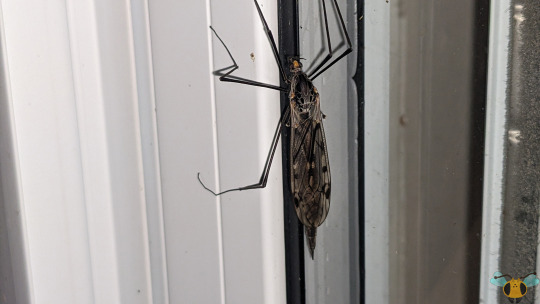







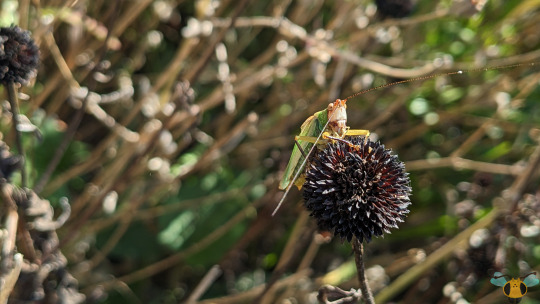
Insect Highlights of 2024
With the new year celebrations scheduled for this weekend, I thought it best to share some of my favorite insect specimens from this year, rather than one single typed of insect. The pictures here haven't been uploaded to the blog in a post, so today they can all share the spotlight. There are many familiar faces here and all of them are incredible and beautiful creatures. Hopefully there are even more insect delights and finds to enjoy in the upcoming year. To ring in the new year, we have the following insects:
Four-Spotted Skimmer - Libellula quadrimaculata - Order Odonata (May 24th)
Giant Crane Fly - Tipula metacomet - Order Diptera (September 16th)
Spring Fishfly - Chauliodes rastricornis - Order Megaloptera (May 27th - from Muskoka)
Milkweed Aphids - Aphis nerii - Order Hemiptera (September 3rd - alongside German Yellowjackets)
Oil Beetle - Meloe campanicollis - Order Coleoptera (October 21st)
Fall Webworm Caterpillars - Hyphantria cunea - Order Lepidoptera (July 25th)
Great Golden Digger Wasp - Sphex ichneumoneus - Order Hymenoptera (July 1st)
European Earwig - Forficula auricularia - Order Dermaptera (September 21st)
Common Red Soldier Beetle - Rhagonycha fulva - Order Coleoptera (July 1st)
Black-Legged Meadow Katydid - Orchelimum nigripes - Order Orthoptera (October 27)
All pictures here were taken in 2024 with a Google Pixel 4.
Wishing everyone a Happy New Year and a marvelous 2025! Thank you everyone for making this another beautiful year of insect observations! I hope to reach even more of you this year with many more wonderful insect pictures and videos. Enjoy your celebrations!
#jonny’s insect catalogue#happy new year#dragonfly#fishfly#earwig#caterpillar#katydid#aphid#beetle#wasp#giant crane fly#oil beetle#four spotted skimmer#european earwig#milkweed aphid#spring fishfly#black legged meadow katydid#fall webworm caterpillar#great golden digger wasp#common red soldier beetle#ontario insect#fly#toronto#2024#happy new year 2025#yearly insect highlights#fall webworm moth caterpillar#tipula metacomet
21 notes
·
View notes
Text


Fall Webworm Moth Hyphantria cunea Erebidae
Photographs taken on August 13, 2023, at Pinery Provincial Park, Ontario, Canada.
#wildflowers of southern ontario#moth#caterpillar#Fall Webworm Moth#Fall Webworm caterpillar#Hyphantria cunea#Hyphantria#Erebidae#nature#web#Pinery Provincial Park#provincial park#ontario#canada
4 notes
·
View notes
Text

how much for that wormy in the window
32 notes
·
View notes
Text




A Fall Webworm moth caterpillar (Hyphantria cunea) meandering across the chicken coop roof....
#nature#my photography#fall webworm moth#nature photography#insect larvae#caterpillar#backyard nature#moth caterpillar#wildlife photography#chicken coop
7 notes
·
View notes
Text



An adorable Fall webworm makes their way around (these dudes are FAST)
Monday September 2nd 2024 11:00am
#2024#september#fall webworm moth#Fall webworm#webworm moth#webworm#animals#insect#insects#bug#bugs#caterpillar
7 notes
·
View notes
Text

White Fuzzy Caterpillar on Grass
Fuzzy white bristles glint in the light of the sun as this fall webworm caterpillar ventures up a blade of grass.
See more of my work: Check out my archive.
Join me on my journey: Follow me on tumblr.
Support my creative life: Buy me a coffee on KoFi.
#nature#photography#animals#bugs#insects#moths#fall webworm#moth#lepidoptera#hyphantria cunea#white#fuzzy#caterpillar#grass#garden#scenery#naturecore#beautiful nature#mother nature#texas nature
9 notes
·
View notes
Text




bugs from todayyy
#the snail is. probably just a garden snail? not 100% on that but wgatever#no idea on the caterpillar. probably some variety of tiger moth?#but fall webworm caterpillars also look pretty dang similar.#very silly guy either way.#caterpillar#moth#insect#bug#snail
6 notes
·
View notes
Text


I <3 my 100 infants
1 note
·
View note
Note
Anything about the fall webworm moth, perchance?
You have subscribed to DAILY BUG FACTS
🪲
TODAY'S FACT IS
Did you know that the Fall Webworm Moth (Hyphantria cunea) is a moth that wraps trees in webs? The caterpillars feed on the leaves of the host tree and travel from leaf to leaf on its silk. These caterpillars are quite voracious so they quickly enweb their host.
Native to North America (Canada through Mexico) the caterpillars hatch late in the summer and are active through the fall season, giving them their name.
The adult moth is a beautiful, fluffy, white moth with brown/grey speckles on its wings.
Their web nests are thermoregulated, helping the larvae stay warmer as the weather cools and develop quicker.
🪲
Thank you for subscribing to DAILY BUG FACTS

Photo by Ken Cheeks
99 notes
·
View notes
Text
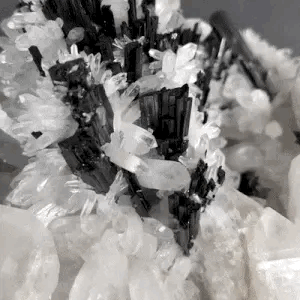


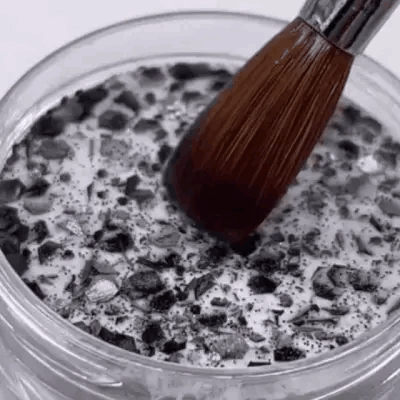


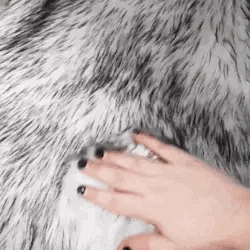

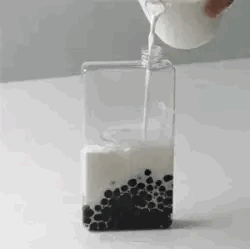
Stimboards of bugs I see outside #1: This male Fall Webworm Moth I found chillin on a big Aloe plant. Webworm moths are named after their caterpillars, which build webbed nests in trees and bushes. Despite being considered a pest, they’re not actually harmful to the plants they feed off of, and people just don’t like them because of the way their nests look in trees.
🕊️ ⚫️ 🕊️ / ⚫️ 🕊️ ⚫️ / 🕊️ ⚫️ 🕊️
Help Palestine with one click

#stim#stimboard#webworm moth#bugs#entymology#moths#insects#acrylic#food#dragonfruit#spots#black#white#slime#fur#crystals#fashion#coat#soft#rain#boba#drinks#not request#fav
19 notes
·
View notes
Text










Fall Webworm Caterpillar - Hyphantria cunea
This year simply wouldn't be complete without one more share of this specie. Previously, these well-multiplied Caterpillars were first seen on July 1st, and again on July 7th to offer a brief glimpse at their behaviors within their webbing, and how change may affects them as they grow and mature. Today's post takes a further leap and jumps forward to photography done 18 days from 7th, with the exception of Picture 1 which was added to offer a comparison between the two points in time. Within a silken home among the tree branches, these voracious wrigglers are well protected from predators and the elements of the forest. With help from the passage of time, it's very evident that the nest has been tampered with a few times and it is filling up with frass, dried leaves and shed exoskeletons. On the bright side, many wriggling individuals have become much larger and hairier as a consequence of molting to the next instar! Hooray! Their patterns along their body have changed too and have become much more prominent, but these individuals still have a few more molts to undertake. When they arrive at their last instar, they will have orange faces and sport dark colors with faint yellow rings; the lattermost feature is reminiscent of their prior forms. You would be hard pressed to find individuals such as those among the pictures here as Fall Webworms tend to leave the nest when they get too big. While their home's protection is nice, there simply isn't enough food to facilitate the larger individuals' metamorphosis to Moths.
To be absolutely specific: the Caterpillars will overwinter in leaf litter as pupae and then emerge next summer as Moths, whereby they will lay eggs on new plants and start the cycle over again. In Canada there is only 1 generation a year, but more southern regions have been reported to have up to 4! That's a lot of hungry Caterpillars to find! Fortunately this specie can feed on a variety of plant leaves, so it's not as if they would have to crawl too far from their webbed home to find new food. And by then, their longer and more densely distributed hairs plus a somewhat mottled body may help defend them against predators and allow them to hide in a more exposed environment respectively. Everything has its time of course, so these individuals have yet to strike out on their own, but were likely to do so. Moreover, although many individuals have arrived at new instars within the webbing, there are still a handful of smaller individuals (Pictures 2 and 10) that have yet to molt and grow larger. It's possible that they hatched later than the others, or that they are affected by an uneven leaf supply as a consequence of stronger, more robust Caterpillars getting their fill first. The smaller Caterpillars may have to get by with what they can for a time, but if they can endure until the larger individuals leave the nest, they may have a good chance to grow successfully as well. Finally, while the posts (for 2024) featuring this insect took place over 3 weeks and 3 days, it's worth it to remember that the lifecycle of this Caterpillar from egg to pupa takes place over 6-8 weeks.
Pictures were taken on July 7 and 25, 2024 with a Google Pixel 4. Happy First Day of Winter!

#jonny’s insect catalogue#ontario insect#caterpillar#fall webworm moth caterpillar#fall webworm moth#fall webworm caterpillar#owlet moth#tiger moth#lepidoptera#insect#web tents#caterpillar nest#toronto#july2024#2024#first day of winter#entomology#nature#invertebrates#arthropods#photography#animals
7 notes
·
View notes
Text
Tent caterpillars!!


I was skateboarding with my cousin and we came across them by a creek
I initially thought they were webworms, but they tend to come out in the fall, while tent caterpillars come out in the spring
this is what they'll look like grown up


#entomology#moths#caterpillar#caterpillars#tw bugs#tw bug mention#bugs#bugblr#tent caterpillar#eastern tent caterpillar#entomophobia#insects#insectophobia#tw entomophobia#tw insects#tw insectophobia
27 notes
·
View notes
Text


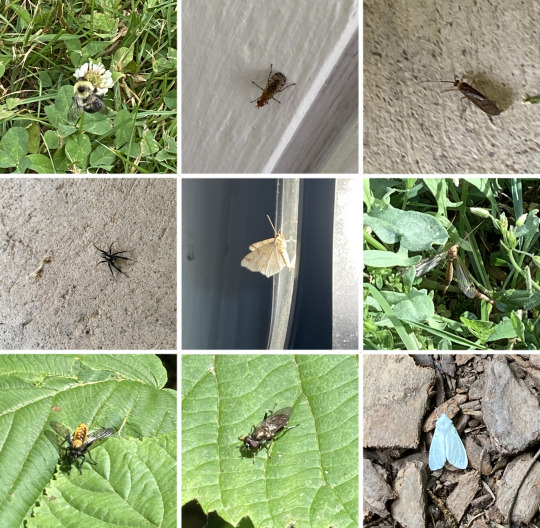



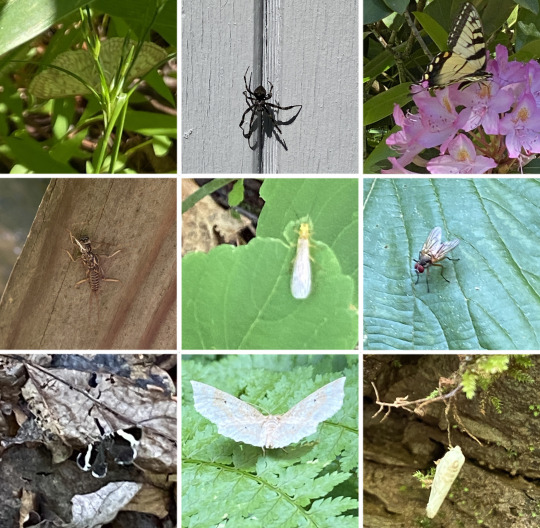

Zuzu's bug-ventures June 8-16, 2024 (insects/spiders from a state park in northeast Pennsylvania) (re-uploading because of file size issues)
I figured I would make a collage after getting so many! A couple of the above photos have duplicates, so all in all I believe I found 65 distinct kinds. I'm still working to ID some of them, but all the ones I think I have ID'd are under the cut. Anyway, it was truly a fun experience. Maybe next time I'll have a camera that isn't a shitty phone!
You can see full size photos of most of these here.
IDs under the cut
Just a note, I'm not 100% on any of these. My IDs are speculative based on google searches, reddit, and so-on. If you think something is wrong, PLEASE let me know!
Also, each image has 9 insects/spiders in a grid. I will be referring to each grid of 9 insects/spiders as a single image below, and identifying all 9 based on rows within the image. If that makes sense. Hopefully it does!
Image 1 (first row left):
Top row (from left to right): Northern paper wasp (I'm told it's carrying caterpillar meat); Hickory tussock moth; Ground beetle of some kind (could not ID)
Middle row: Fall cankerworm moth; Barn spider; Red ichneumon wasp
Bottom row: Long-horned caddisfly; Copper underwing caterpillar; Brush-legged mayfly
Image 2 (first row right):
Top row: Very loud very big bee (could not ID); Common blue mud dauber wasp; Harvestman spider
Middle row: Limoniid crane fly; Firefly; Hoverfly
Bottom row: Elegant grass-veneer moth; Tiger crane fly; Western honey bee
Image 3 (second row left):
Top row: Two-spotted bumble bee; Marsh fly; Yellow-collared scape moth? (could not ID)
Middle row: Wolf spider (male); Macaria moth; Tipula lunata (type of crane fly)
Bottom row: Robber fly; Brown-toed forest fly; Virginian tiger moth
Image 4 (second row right):
Top row: Blue dasher dragonfly? (could not ID. Dead in spider web); White admiral butterfly; Chalk-fronted corporal dragonfly
Middle row: Clubtail dragonfly? (could not ID); Hemlock borer beetle; Eastern tent caterpillar
Bottom row: Another Tipula lanata crane fly; Double-banded grass-veneer moth; Horace's duskywing butterfly
Image 5 (third row left):
Top row: Cabbage white butterfly; Spongy moth caterpillar; Dragonfly exoskeleton (could not ID)
Middle row: White-striped running crab spider; Jumping spider (could not ID, but yes there is a spider in this photo!); Orchard orbweaver spider
Bottom row: Soldier beetle; Fortunate wave moth; Another white admiral butterfly
Image 6 (third row right):
Top row: Tussock moth caterpillar; A third white admiral butterfly (this is the last one I promise! They just have so much variation!); Another spongy moth caterpillar
Middle row: Common green bottle fly; Eastern parson spider; Another orchard webweaver spider
Bottom row: Blue dasher dragonfly (possibly female); Calligrapher fly; Dun skipper butterfly
Image 7 (last row left):
Top row: Another fortunate wave moth? (could not ID); Orbweaver spider of some kind (Could not ID); Eastern tiger swallowtail butterfly
Middle row: Stonefly exoskeleton; Ontario sallfly; Lesser house fly
Bottom row: White-striped black moth; Pale metarranthis moth (this one is my favorite find); White planthopper? (could not ID)
Image 8 (last row right):
Top row: Millipede; Immaculate grass-veneer moth; Flat wireworm beetle
Middle row: Twobanded Japanese weevil (WEEVIL TIME!!); Earwig; Bob's yellow and black millipede
Bottom row: Click beetle; Sod webworm moth? (could not ID); Deer fly
And that's it! Again, let me know if I made mistakes or if you know any of the ones I couldn't ID.
#insects#insect photography#bugs#insect identification#tw insects#tw spiders#my photos#memories;#Zuzu's bug ventures
11 notes
·
View notes
Text



Fall Webworms (Hyphantria cunea) create translucent stages for themselves, and when the light is just right they perform a shadow puppet show...
#nature#my photography#backyard nature#nature photography#fall webworms#caterpillars#moth larva#beauty
3 notes
·
View notes
Text


i just think they’re neat
(I would NOT advise doing this with strange. caterpillars if you aren’t 100% positive on what they are. These fellas are fall webworms (Hyphantria cunea) and I fucking love them)
2 notes
·
View notes
Text

White Wandering Webworm
A fall webworm wanders among the bark and grass, its fine, white bristles spreading out like a starburst from its segmented back.
See more of my work: Check out my archive.
Join me on my journey: Follow me on tumblr.
Support my creative life: Buy me a coffee on KoFi.
#nature#photography#animals#bugs#insects#moths#fall webworm#moth#lepidoptera#hyphantria cunea#white#fuzzy#caterpillar#grass#garden#scenery#naturecore#beautiful nature#mother nature#texas nature
5 notes
·
View notes